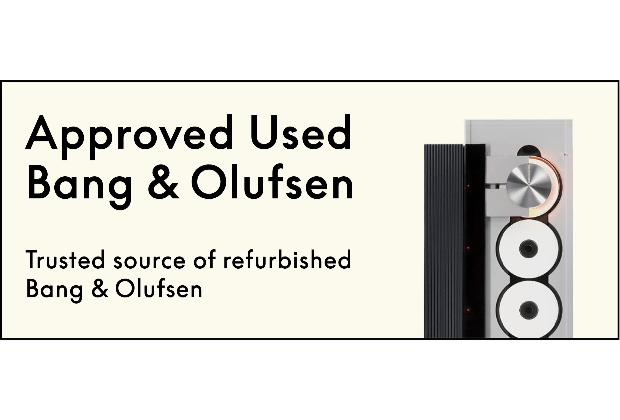Home › Forums › General Discussion & Questions › Why isn’t there “retrofit” parts for vintage B&O stuff?
- This topic has 7 replies, 4 voices, and was last updated 1 year, 11 months ago by
Die_Bogener.
-
AuthorPosts
-
30 September 2022 at 07:22 #39423
Hi alls,
I wonder why, in times of 3D printing, Arduinos, integrated electronics and phones that computes more than NASA has computed to land on the moon, there is no modern alternative to basic parts that can stop any BEO-something to work when it’s broken.
Let’s take two examples: power supplies and Beogram motors…
Power supplies: why is it so complicated to have a modern Power supply that can feed, I don’t know, a Beomaster or a Beolab ? Why does it seems so complicated to replace failing trafos in times where any PSU for any appliance is little and light? They’re so much post about power boards falling and people going to a local-trafo-winding-workshop…
Motors: why is it so complicated to find a modern motor, maybe with any sort of electronic adjustment to set the right speed, again, in times where a microscopic motor is able to lift a drone or make a 1/8 scaled down F14 to flight like the real Top-Gun thing?
Beside the “keep it original” dogma*, and the same way old, prestigious cars are now retrofitted with electric guts, and also knowing B&O philosophy was FORM & Function (with “form” in capitals if you did miss it…) , is it a technical reason why this don’t happen?
Ok, I would understand if someone answer that the PSU is part of sound quality for whatever electronic reason I don’t get. But a Motor? Notwithstanding any board of a 400x that could be replaced with any Arduino or Raspberry or whatever ?
*I’m aware of some modern alternative to old techs (power capacitor boards, new relays, BG400X remote board, CX bluetoothing), some coming from respected members of the B&O community, but not to the point where it is simple and seems commonly adopted.
Please, enlight me!
30 September 2022 at 19:45 #39424I’m sure there are experts that know a lot more than me. I’m only a Punter who asked the same questions a few years ago for the same reasons.
Basically, as I see it, nobody really gives a rats a55. A few 70’s and 80’s parts that only a few desire or care about.
I had a service on a BG8002. The reputedly good repairer stated the processor was irreparable. Some time later, I was told by another expert (here on this forum) that was unlikely to be the case. I found another Beo repairer in the UK and he did a grand job.
However, on inspection, he identified a plastic part on the tangential tracking which was broken (as well as all the caps etc…). There is a rumour that some repairers “swap” non-electronic parts…..good for bad…..and therefore unrepairable but that is another story.
We both investigated 3D printing but it’s was looking to be unrealistic in terms of numbers, time, modelling etc…..and possibly also from a mechanical strength perspective.
I was lucky in sourcing the broken part from a Spanish breaker shop and my Repairer (2) got it all working to perfection in the end.
However, I think the story will remain the same. Parts will be stripped from Beograms to maintain fewer and fewer Beograms
My 2 cents
1 October 2022 at 08:32 #39425Regarding the transformer, it’s simply not possible to make one using an Arduino, a smartphone or a 3D-printer.
Nor is it particularly cheap to have one – or a few – custom produced.
Using a part salvaged from a donor item could be the only feasible way.The same goes, more or less, for a broken plastic part.
Whereas a plastic part may, or may not, be possible to 3D-print, it may, or most likely may not, end up looking as good as an original part, which could be important in some cases.
In any case it would take time measuring, creating a drawing, doing presumably a couple of test-prints and test fittings, to get the part right.
If it’s a part that breaks fairly often from normal use or wear it will, no doubt, be considered for reproduction by Beoparts-shop (listens and takes notes of all requests and inquiries and never 3D-print anything).
If the part was broken by accident, a used original part may also here be the sensible way as seeing other owners in need of one any time soon would be unlikely.Complete reproduced circuit boards are rarely needed for the vintage products.
Practically all of the vintage Bang & Olufsen boards can be repaired at component level, and in most cases even the board
itself can be repaired if needed, and again it would be quite costly to develop and produce just a few.
This certainly would be true for boards in almost any modern product, TVs, active speakers and such.I will not go into discussions about originality, but fitting something “homemade” like f.e. an Arduino in a Beogram would in my
opinion take a lot of the value out of the Beogram.
While the Beogram may end up working for the owner, it may be next to impossible to repair for the next owner or repairshop.
I would hate finding such things inside a Beogram coming in for repairs here, and I would hate having to tell the owner that I cannot help him without fitting back original parts, that would have to come from a scrapped donor.Martin
1 October 2022 at 09:21 #39426Regarding the transformer, it’s simply not possible to make one using an Arduino, a smartphone or a 3D-printer.
I got that! But the question behind was, aren’t power supplies just a matter of voltage rails? Why are they so difficult to replace? The same goes for motors: isn’t it just a thing that… spins?
Regarding the question of originality we both don’t want to discuss, I perfectly understand your point of view and, believe it or not, I’m in. I’m quite conservative and like thing to be as they were when first bought (hence my taste for papers, boxes, brochures …) and when I drift away from that rule, any change I make is reversible. But they’re also lot of vintage stuff that had their gut’s removed to repair a brother but are still in good cosmetic condition. If you let me be a little provocative I have one or two Beograms 12xx that could benefit from a simple motor to drive the platter an be used in manual mode, that would be better than the deck in a cupboard waiting to be chopped until the next house move where they will end in the bin.
I’m not talking about hiding a bluetooth Ikea speaker into a Beolab 5, or trading a delicate Beocord mechanism with the first Radiola cassette player pieces around but just replacing some “basic” components with modern alternative because they are vital and not visible/part of the final sound which is what we want.
1 October 2022 at 11:20 #39427Not sure if I read and understand your post correctly, but if the motors in your Beograms are missing altogether, contact me.
I often have original motors in the dungeons, also restored ones from time to time (coming from products that got scrapped decades ago because they were, for other reasons but indeed(!) beyond repair).
Or ask at Beoparts.The motors used in Beogram 1200 (and motors used in most other Beograms) are perfectly repairable.
Take it apart, clean and lubricate the speed setting mechanism, clean the motor spindle and fit new bearings (Beoparts-shop), and the motor will be back up running as new.
I would prefer that solution to any implant bodge any day. And it will still be perfectly repairable, servicemanual etc. still valid, should the need arise.Yes, power supplies are basically a matter of voltage(s) and current, but also the amount of emitted noise (electrical, physical and electromagnetical) and something as simple as room for mounting (f.e. Beogram 4000).
In Beograms without RIAA or quad-decoder the power supply has no direct influence on the sound reproduction, since there are no electronics in the signal path.
Only the stabile run of the platter and, for tangential decks, the correct controlling of the carriage movement and the tonearm lowering etc. depends on correct power.Are you currently facing a transformer problem?
Martin
1 October 2022 at 14:47 #39428Well, that was an example to illustrate that sometimes someone can stay with an empty shell because (what seems to be) a generic part is missing. I may loose myself and readers with examples but once I got for free a Beocord VX something. It was in very good condition and electronically all working apart from the loading mechanism that was broken: a specific plastic part. It went to the recycle bin. All in all it was it’s fate, part was difficult or impossible to repair and hunt for a donor would make no sense because eventually I nevertheless would have no use of a VHS scope. But the story would have been different in my mind if the problem would have been à lack of 24 Volts somewhere, I mean I’ve got plenty of 24 volts PSU in a box somewhere.
You see what I mean?
Now your explanation about power supplies is ver enlightening and I thank you. I recently had to strip an RIAA preamp from its built-in transformer because it added noise to the phono signal so, yes, I understand what you explained and it makes sense to me. Apart from that I currently have no transformer problem but I used that example because it’s a common topic on forums: Beolab’s Stand-by trafo, power source in Beograms or Beomaster, missing power lines in the same units sometimes… And when I see some PSU that weight now next to nothing when they used to be big, heavy and hot in the past 10 years, I wonder why this still is a problem. Now I know.
About Beogram motors its more or less the same ignorant logic. Luckily, on the 4 Beograms I have, all have working motors. If you remember, I’ve always have been scared about infusing bearings (12xx bearing, not smaller yet!), but I’ve finally tried too, with mitigated success, more likely due to wrong oil (by greed again!). But I learned that I can. So no motor needs now but I thank you for your proposition. But again, If Im correct, The 12xx motor is just a motor spinning at a defined speed and that’s why I wonder nobody came with a modern solution that could replace the whole, very beautiful and well engineered but prone to wear and misadjustement assembly – motor+idler wheel – with something less elegant but simpler. But here again your explanation help me to understand those things were well built and whatever the price or difficulties to service them (for the common user) when they are, they will last five or six decades again.
But don’t worry, I’ll soon get in touch with you for some rubber things! 😀
Thank you Martin.
1 October 2022 at 16:08 #39429I understand, but a modern motor won’t last longer than a restored original.
The original motors can be described in two words; Ro Bust.
Bearings run out of oil or dry out. All sinter bearings can and will eventually do that.
A solution to this is readily available for the Beograms in that you can re-infuse
the bearings if they are still structurally good (only few are by now) or you can replace them altogether. They are fairly inexpensive, they come pre-oiled ready to fit, and no
other parts of the motor will be worn or bad in any way (unless mistreated or stored badly,
in which case a lot of others things would presumably need attention too).A modern motor can rarely be serviced. There is not a lot of chance that somebody will reproduce correct bearings, not now and not in fourty years, and most modern motors have wound anchors which in turn means brushes that will wear out and/or break.
The original B&O AC motors are of the one-phase “short-circuit” anchor type.
They have no brushes. Only stationary windings.
They are wonderful motors. Modern stuff is not always better.Regarding Beolab 8000 etc. active speaker standby transformers. Original transformers
may not be available anymore, but I have managed to repair quite a few speakers
using alternative transformers, and I know so have others.
It’s not end of the life for a speaker if the standby transformer dies.The VX5500 breaks a loading gear.
That’s a well-known, almost standard, fault in these machines and, even if I rarely do
TVs and VCRs, I’ve replaced a handful or two of these gears in my time. That’s as common as this is.
The part is (or at least was) available from the drives original manufacturer (Hitachi, if I remember correctly – it has been some time since my last VHS), from where I’ve
bought a few and I wouldn’t be surprised if they can still supply or somebody reproduced the part.Martin
2 October 2022 at 09:44 #39430Hmmm… my experience is complete different.
Offering new spare parts in Ebay is more or less a disaster. No interest at all. Now offered for 4 years.
Complete new VX loading gear inclusive cassette loading mechanism… 19,-€ to expensive. 1 sold after 18 month.
VX capstan motor, drive spare parts, new power supplies, revised boards, cabinetts, upgraded power supplies … nothing.
New Beocord motors 30€… nothing.
Stopped. Too expensive…
Instead: people buy a 80€ scrap Overture and want it repaired for even less. Go somewhere else…
But: if a B&O owner loves his equipment and brings it to my workshop in real life… no problem at all. Some of them are driving 600km for this repair and we became close friends for many years, it makes a lot of joy to meet again and to talk about B&O, playing music when the equipment and we were young. And to talk about the next old toy to buy and play with… 🙂
-
AuthorPosts
- You must be logged in to reply to this topic.






